How #ISIS misuses early Islamic history to justify its actions
Abu Bakr Al-Baghdadi, leader of ISIS, declared himself ‘Caliph Ibrahim’ in June 2014. Claiming a genealogy traced back to the Prophet Muhammad and his noble tribe the Quraysh, together with a PhD from the Islamic University of Baghdad, his religious credentials are certainly stronger than previous Al-Qaeda leaders.
The caliphate in early Islam was a military and political office, not simply a religious one. The Prophet Muhammad during his lifetime was religious leader, lawgiver, chief judge, commander of the army and civil head of state all in one. ‘Caliph Ibrahim’ is following this model. The Prophet Muhammad died suddenly in 632 leaving no male children. Disputes over who was to be his khalifa or caliph, (Arabic ‘successor’) have been responsible for most of the schisms of Islam, including the major Sunni/Shi’a division. ‘Never was there an Islamic issue which brought about more bloodshed than the caliphate,’ wrote the respected historian Al-Shahrastani (1086-1153) in his Book of Sects and Creeds.
To boost his standing further, ‘Caliph Ibrahim’ appears to be modelling himself on the first four Sunni Orthodox caliphs – Abu Bakr, Umar, Uthman and Ali – known as Al-Rashidoun, ‘the rightly-guided ones’, who succeeded the Prophet Muhammad. Under them the Islamic state expanded within a decade from Arabia to conquer first Syria, then Iraq, Persia, Egypt and beyond. Those early conquests were characterised by military campaigns led by brilliant strategists like Khalid ibn al-Walid and Amr ibn al-Aas, using horses and camels in lightning raids against their enemies – the Byzantines and the Sassanians – whose armies were generally on foot. Today’s ISIS attacks too are characterised by their speed and surprise, always mounted on vehicles, attacking from many sides like a Bedouin ghazwa (raid). Raiding was seen as a noble occupation in early Arabia – much poetry is devoted to its praise. Acquisition of new territories was one of the principal duties of the caliph, and it is to this tenet of jihad (religious war) that Islam owed its fast early growth.
The Prophet Muhammad’s great achievement was to break tribal allegiances and replace them with a new fraternity of Islam: “Know ye that every Muslim is a brother unto every other Muslim, and that ye are now one brotherhood.” All new converts of whatever tribe, race or nationality were welcomed. The new ‘Caliph Ibrahim’ is using the same tradition to welcome foreign fighters to his fold.
New actors on the world stage like ‘Caliph Ibrahim’ do not come out of nowhere. Conditions have to be right for them to flourish. When the Prophet Muhammad preached the new religion of Islam in what is now Saudi Arabia, anarchy already reigned in the 7th century world around him. Arabia’s political structures had broken down, sapped of energy by never-ending tribal feuds and disputes over springs, pasture and livestock – the bare necessities of life in an arid desert environment. Long-running wars between the Byzantines and the Persian Sassanians, heavy taxes imposed by both empires and the multiple schisms of the Christian Church paved the way for the rapid advance of the early Muslim armies.
Like the early caliphs, ‘Caliph Ibrahim’s’ conquests have been eased and enabled by the chaotic regional environment. The post-2003 ‘de-Ba’athification’ process carried out by the Americans after deposing Saddam Hussein left an Iraq reeling and beset with government in-fighting. Ripe for harvest, its oilfields beckoned tantalisingly.
Syria’s tragic revolution-turned- civil-war provided the perfect cloak to ISIS ambitions. Under a general amnesty in early 2012, Al-Qaeda-affiliated extremists were released from Assad prisons. Some regrouped with remnants of Al-Qaeda-in-Iraq and organised themselves into what has evolved as ISIS. In March 2013 they captured Al-Raqqa on the Euphrates, 25 miles east of Tabqa, Syria’s largest dam, just as in August 2014 they captured the Mosul Dam, Iraq’s largest, on the Tigris – now wrested back for the time being by the Kurdish peshmerga with the help of US air cover. In Syria ISIS practised its fighting skills, not on the well-equipped Assad army, but on Syria’s Kurds and on the poorly-armed rebel fighters of the Free Syrian Army. ISIS now controls most of Syria’s eastern oilfields, and in Iraq too its strategy involves systematically seizing the northern oil installations, fuelling its wealth. Conservative estimates put ISIS income from oil alone at US$1 million a day. The bearded chiefs have grown rich beyond their wildest dreams.
Thanks to such control of oil and water, new followers flow strongly into the fold. An impoverished population suffering from the effects of drought, unemployment and disenchantment with the powers-that-be, makes fertile recruiting ground. Most of the Prophet Muhammad’s early converts to Islam were slaves and lower classes – people with something to gain. The first caliph Abu Bakr, when recruiting for his armies, wrote to the people of Mecca promising them there was rich booty to be won from the Byzantines. To raise more money from its conquered territories, early Islam also imposed a means-assessed poll tax on Jews, Christians, Sabians (and later Zoroastrians) considered ‘People of the Book’, acknowledged to be monotheists. Only groups like the Yazidis, who were misunderstood as ‘devil-worshippers’, were presented with the stark choice of ‘convert or be killed’. The poor paid a quarter of the rich, while women, children, beggars, the old, the insane and the sick were exempt. ISIS has been taking taxes from towns under its control in Syria since 2013. In Iraq it has been demanding protection money from local business, whilst also presenting a generous face through handing out food, petrol and subsidising electricity.
As well as offering an attractive and powerful identity, ISIS can offer $400-500 a month as regular income to young Sunnis only too happy to believe in a new ideology based on their own supremacy, and in which the Arabian concept of ghanimah, booty, is legitimate. Sura 8:42 of the Koran says ‘one-fifth of the booty is for God, the Prophet, those close to him, orphans, the poor and the wayfarer’ ie belongs to the state. By implication therefore the rest can be taken by the fighters. Yezidi women and children are legitimate spoils of war in this ideology.
Under the rallying cry of religion, the ISIS of today is driven by motives it sees as sanctioned under Islam – to gain territory, to acquire new converts, and to spread its strict Islamic rule of law – the Shari’a – with punishments like amputation for theft and beheading for apostasy or for non-believers who refuse to convert. It is copying the social mores of 14 centuries ago.
But behind this religious cloak the same economic forces that drove the Prophet Muhammad’s followers and led to his early conquests are driving the speed of ISIS’s advance. Many despairing Syrians and Iraqis who have watched their countries crumble around them are now joining ISIS out of pragmatism, rather than ideology. The attraction of being on the winning side cannot be overestimated. As long as the region remains in disarray, the likelihood is that ISIS will increasingly be seen by many as the only answer – and a rewarding one to boot.


![Yazidi children during a religious ceremony [Getty]](https://dianadarke.com/wp-content/uploads/2014/08/yazidi-_76808503_children.jpg?w=300&h=207)
![Yazidi tombstone in southeast Turkey showing the peacock symbol, representing God on earth [DD, May 2014]](https://dianadarke.com/wp-content/uploads/2014/08/yezidis-1.jpg?w=225&h=300)
![Yazidi tombstone in southeast Turkey, with symbols of the peacock and the sun, representing God on earth [DD, May 2014]](https://dianadarke.com/wp-content/uploads/2014/08/yezidis-8.jpg?w=225&h=300)
![Yazidi graveyard showing peacock symbol to represent the Peacock Angel [DD, May 2014]](https://dianadarke.com/wp-content/uploads/2014/08/yezidis-7.jpg?w=225&h=300)

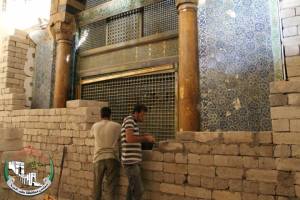
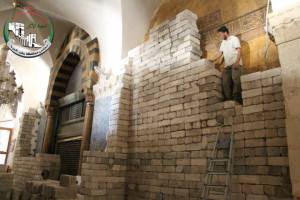
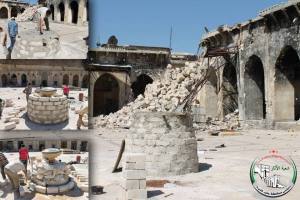
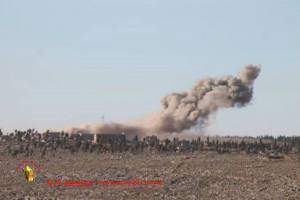
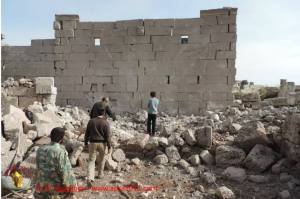
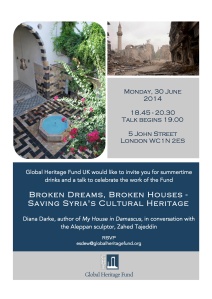

![Images of Paradise in the mosaics of Damascus' Great Umayyad Mosque [DD]](https://dianadarke.com/wp-content/uploads/2013/09/travellers-syria-90-1-byzantine-craftsmen-were-used-to-create-the-mosaic-images-of-paradise-in-the-great-umayyad-mosque.jpg?w=300&h=225)
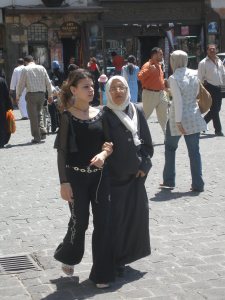
![Saladin's Castle in the mountains above Lattakia [DD]](https://dianadarke.com/wp-content/uploads/2013/06/damascus-trip-july-2010-1442.jpg?w=300&h=225)
![Saladin's Tomb in Old Damascus. Saladin was a Kurd. [DD]](https://dianadarke.com/wp-content/uploads/2013/09/travellers-syria-38-9-saladins-tomb-old-damascus.jpg?w=225&h=300)



